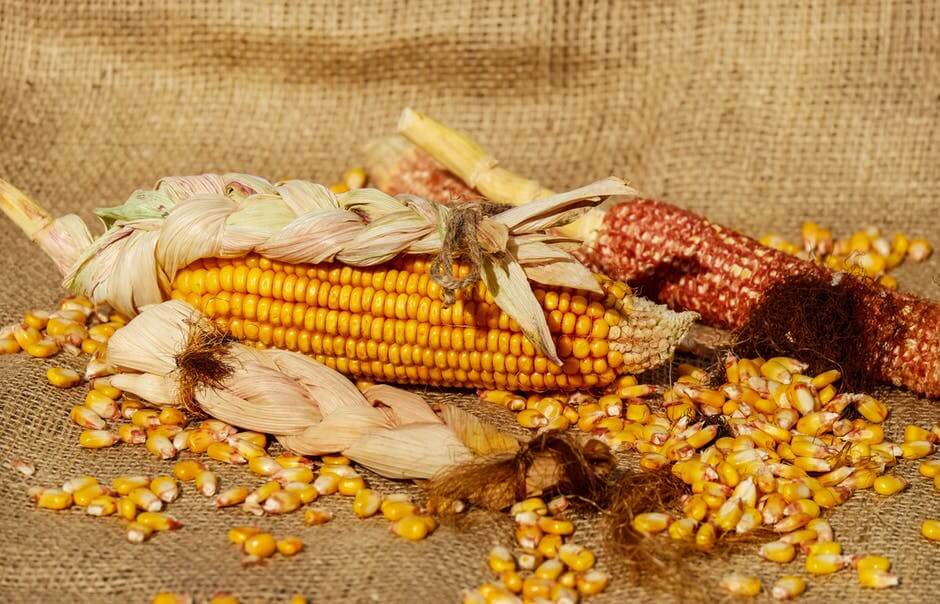Business
Corn, oats remain high; cotton affected by poor export sales
Cotton suffers from poor export sales report from USDA, while coffee, sugar and cocoa closed higher.

Wheat
Chicago Winter Wheat markets closed higher for the week, but Minneapolis closed a little lower. The main factor for the higher prices was the sudden drop in the US dollar against major world currencies last week. US Treasury Secretary Mnuchin said in the middle of last week and a weaker dollar was desirable to help increase US imports.
Selling in the dollar was swift, and trends turned down in the dollar again. The move was big enough to create new ideas for US wheat export demand, and there is a good chance that sales can increase. The Russian ruble and the euro have been drifting higher, anyway. USDA showed increased export sales in its weekly reports last week, although the sales themselves were not really spectacular. The US remains partly a weather market, with La Niña conditions affecting the production potential for Hard Red Winter areas. The market is noting dry conditions in western Kansas and other parts of the western Great Plains and the La Niña winter weather forecast. A drought remains in the region and has become more serious, especially in Oklahoma and Texas. The crop has not established itself well due to the dry weather. World estimates, in general, remain large, and even reduced US production cannot change this fact very much. US prices will need to remain competitive with European and Russian prices to get much business, and demand in the country is not strong right now. The weekly charts show that both Winter Wheat and Minneapolis Spring Wheat markets remain in sideways trends. However, the charts show that the markets are once again attempting to move higher and the weaker US dollar and the weather there offers hope for a new trend higher to develop.

Weekly Chicago Soft Red Winter Wheat Futures © Jack Scoville

Weekly Chicago Hard Red Winter Wheat Futures © Jack Scoville

Weekly Minneapolis Hard Red Spring Wheat Futures © Jack Scoville
Corn
Corn and oats closed higher last week. Corn futures found support from speculative buying as funds and other speculators move to cover short positions. The weekly export sales report was strong and added to improving demand ideas created by the move lower in the US dollar at midweek. The dollar now appears to be in a new downtrend, so additional export demand is possible. It is also possible due to the problems in South America due to the weather. Brazil is not offering corn and appears to be sold out, while Argentina is struggling with dry weather problems of its own that are being caused by La Niña. Overall demand for Corn remains good, and demand for other feed grains such as sorghum and oats is strong. Demand in the US has been very strong from the ethanol sector. The trade is still looking at the dry weather in southern Brazil and Argentina. Forecasts for this week are hot and dry again, with the biggest problems in Argentina. Reports indicated that the weather is good enough right now in Brazil. Farmers have reportedly sold some corn on the rally for cash flow reasons and due to bearish market ideas. Not much if any selling is reported in South America.

Weekly Corn Futures © Jack Scoville

Weekly Oats Futures © Jack Scoville
Soybeans and Soybean Meal
Soybeans and soybean meal were higher last week. The low export sales total for the week highlighted the fact that US soybeans prices have been stronger lately and also highlighted talk of quality concerns in the said product. US and world crushers are having trouble extracting enough protein from soybeans while processing for soybean meal, with the meal often showing about 46% protein instead of the required level near 48%. Changes in the Dollar Index dictated much of the action in soybeans as prices made highs when the index was weaker. The US dollar is now in a new downtrend. Stronger domestic demand has helped support soybeans and soybean meal. The idea that soybeans production in southern Brazil and Argentina are still suffering from dry weather is still the main feature of the market. Crops in these areas are reported to be OK but not in great condition. Forecasts turn drier again into next month, with Argentina likely to be the most hurt by any return to hot and dry conditions. Northeast Brazil has also been dry and is missing out on the current rains. Central and northern Brazil are now forecast to get excessive rains this week. The weekly charts imply that nearby soybeans can move to between 1,010 and 1,020 now, but that soybean meal is already beyond some swing targets. Soybean oil is still testing support on the weekly charts.

Weekly Chicago Soybeans Futures © Jack Scoville

Weekly Chicago Soybean Meal Futures © Jack Scoville
Rice
Rice closed higher on Friday and for the week. The weekly USDA sales report was not strong, but the US domestic industry appears to be short bought. Speculators, in general. remain short in the market, and prices have stopped going down. The weekly charts suggest that another major leg higher could be coming soon, and this could be caused by the relatively tight domestic supply situation. Producers are also looking at the coming season and trying to decide how much rice to plant and what price level to start selling. There is a lot of talks that acreage can be increased significantly this year due to the current strong prices and on stronger prices now in Southeast Asia. That means producers should start looking for ways to sell some of the next crop on any strong rallies from here as a way to get started. China said it imported another 425,596 tons of rice in December, mostly from Vietnam, Thailand, and Pakistan. It also imported from other Southeast Asian countries. It imported 3.993 million tons of Rice in the calendar year 2017, up 12.99% from 2016.

Weekly Chicago Rice Futures © Jack Scoville
Palm Oil and Vegetable Oils
World vegetable oils prices were mixed last week, with palm oil and soybean oil a little higher and canola a little lower. Palm oil charts show a sideways trend after there was no follow-through selling from the down moves of the previous week. The trade is looking for palm oil production to decrease in line with seasonal trends, and this expectation has provided the primary support. However, the demand side is very uncertain at this time and has generally been weaker for the last few months. The EU has approved mandates for 35% use of biofuels by 2030 but specifically excluded Palm Oil as a feedstock for the fuels. The Malaysian ringgit has been moving higher against the US dollar, and this has firmed up prices for palm oil. On the other hand, Chinese demand was good in December, and China imported strong amounts of palm oil last year. The Lunar New Year is coming, so a demand bump is possible in the short term as buyers get covered before the holidays. Trends in palm oil are mixed on the daily charts. Canola markets have turned a little weaker on the strength of the Canadian dollar but remain mostly in a sideways trend. It is warmer in the Prairies this week, and the harvest is over, so farmers are more willing to sell. However, deliveries to elevators have been strong due in part to forward selling earlier in the year. US demand for soybean oil in biofuels should remain strong as the US moved to put punitive tariffs on imports from Indonesia and Argentina. Soybean Oil is testing the recent lows on the weekly charts.

Weekly Malaysian Palm Oil Futures © Jack Scoville

Weekly Chicago Soybean Oil Futures © Jack Scoville

Weekly Canola Futures © Jack Scoville
Cotton
Cotton was lower in response to the poor weekly export sales report from USDA. The weekly sales of upland cotton were as low as they had been in several months, and the news provided a fundamental reason to sell futures. The weekly charts suggest that a bigger correction might be coming as futures could work lower in the short term to find new demand. If so, the downside could be limited if the US dollar keeps working lower. However, the charts suggest that prices could move to 7,750 March and perhaps as low as about 7,500 March before finding significant new buying. Current buying has been reflecting the fact that merchants need to buy futures to cover on-call positions. The weekly On-Call report issued last week showed that more cotton needs to be bought in the futures market. The production report showed that there is plenty of cotton here, but getting it out of producers’ hands has been difficult. Prices have also been much higher than most commercials had expected. Commercials are being forced now to buy cotton at higher levels to cover the big on-call position of unpriced cotton that they have contracted for.

Weekly US Cotton Futures © Jack Scoville
Frozen Concentrated Orange Juice and Citrus
FCOJ was slightly higher again. Trends are still up on the daily charts, and the market is still dealing with a short crop against weak demand. The weekly charts also show the potential for prices to work higher over time. The cold weather seen early in the month probably improved fruit quality. The current weather is good as temperatures are warm and there is little rain around, but the crop is small. The harvest is progressing well, and the fruit is being delivered to processors and fresh fruit packers. Trees in Florida are showing fruits of good sizes, although many have lost a lot of the fruit. Florida producers are actively harvesting and performing maintenance on land and trees. Some early flowering has been reported in the groves. Processors mostly getting field-run fruit.

Weekly FCOJ Futures © Jack Scoville
Coffee
Futures were higher on speculative buying tied to the weakness in the US dollar. The charts present a sideways appearance for now, and speculators remain very short and might want to reduce part of those positions. Speculators appear to be covering short positions in both markets in support of the rally last week. New York traders are noting the good weather currently being reported in Brazil and expect another bumper crop. However, ideas of a huge crop might now be part of the futures price and might not really be there as the weather has not been perfect. The reality is that some areas remain too dry while others have seen excessive rains. Producers there do think an adequate to good crop is possible, though, as rain, in general, has been timely. There were reports from London of increased Vietnamese selling, but these were not verified. Reports from Vietnam have suggested that producers there are willing to wait through Tet for better prices before selling much. The situation seems little changed in Latin America. There are reports of short crops in parts of Central America and some areas in South America due to the lack of farmer investment from the low prices. Honduras has been a very active exporter, and offers from most other countries are seen. Differentials in Central America are low.

Weekly New York Arabica Coffee Futures © Jack Scoville

Weekly London Robusta Coffee Futures © Jack Scoville
Sugar
Futures were a little higher on Friday and a little higher for the week, but trends remain down on the daily and weekly charts. New York charts show that futures held an important support area at 1,300 March but did little more. London pushed into the new low ground on the weekly charts but remain at important support areas. Prices rebounded to close narrowly higher in that market as well. The overall feel of the market is that prices, for now, are cheap enough, but both New York and London appear to need a catalyst to work higher in a big way. The idea that sugar supplies available to the market can increase in the short term has been key to the selling. Brazil is considering the end of import tariffs on US ethanol, and this has triggered selling in sugar as more cane can now be processed into sweetener. The move comes as ethanol prices in Brazil are very high. It wants lower ethanol prices to help control energy prices in the domestic market. Mills in Brazil have decided to make more ethanol as world crude oil and products prices have been very strong. The idea is that these prices can continue strong as OPEC and Russia have agreed to keep production constrained compared to world demand. Even so, there are ideas that world Sugar supplies are still more than enough to meet any potential demand scenario.

Weekly New York World Raw Sugar Futures © Jack Scoville

Weekly London White Sugar Futures © Jack Scoville
Cocoa
Futures closed higher in New York and in London again on Friday. It was a consolidation trade, and futures in both markets remain mostly in a trading range. Prices in New York are once again closer to the top end of the range. The charts show that an uptrend is still trying to get going in New York, while London chart trends are mostly sideways. The market is waiting for the Harmattan winds that can suck moisture from the soil and trees and really hurt bean quality and production. These winds have not developed as of yet but could at any time. It has become hot and dry in many parts of West Africa, so conditions are good for the winds to form. Some crop losses might be possible if the current conditions persist even without the winds. Bloomberg said last week that arrivals in West Africa have improved to the point that the government made some private sales to domestic exporters to reduce supplies. That suggests that the main crop production was at least as big as expected. The gut slot for offers from the main crop is passing, and the sales by the government suggest that offers down the road can be less. The recent grind data was weaker for North America but positive for Europe and Asia. Demand is not universally strong but has been improving and is likely to continue to improve as long as prices stay generally weak as processing margins are said to be very strong.

Weekly New York Cocoa Futures © Jack Scoville

Weekly London Cocoa Futures © Jack Scoville
—
DISCLAIMER: This article expresses my own ideas and opinions. Any information I have shared are from sources that I believe to be reliable and accurate. I did not receive any financial compensation in writing this post, nor do I own any shares in any company I’ve mentioned. I encourage any reader to do their own diligent research first before making any investment decisions.

-

 Impact Investing1 week ago
Impact Investing1 week agoTreeblock Showcases Sustainability Solutions at ADIPEC Abu Dhabi
-

 Impact Investing6 days ago
Impact Investing6 days agoHigh Awareness, Low Adoption: The VSME Challenge for European SMEs
-

 Fintech2 weeks ago
Fintech2 weeks agoItaly Issues First Natively Tokenized Minibond on Public Blockchain
-

 Fintech1 week ago
Fintech1 week agoN26 Hires UBS Executive to Lead Turnaround Amid Regulatory Pressure


























You must be logged in to post a comment Login